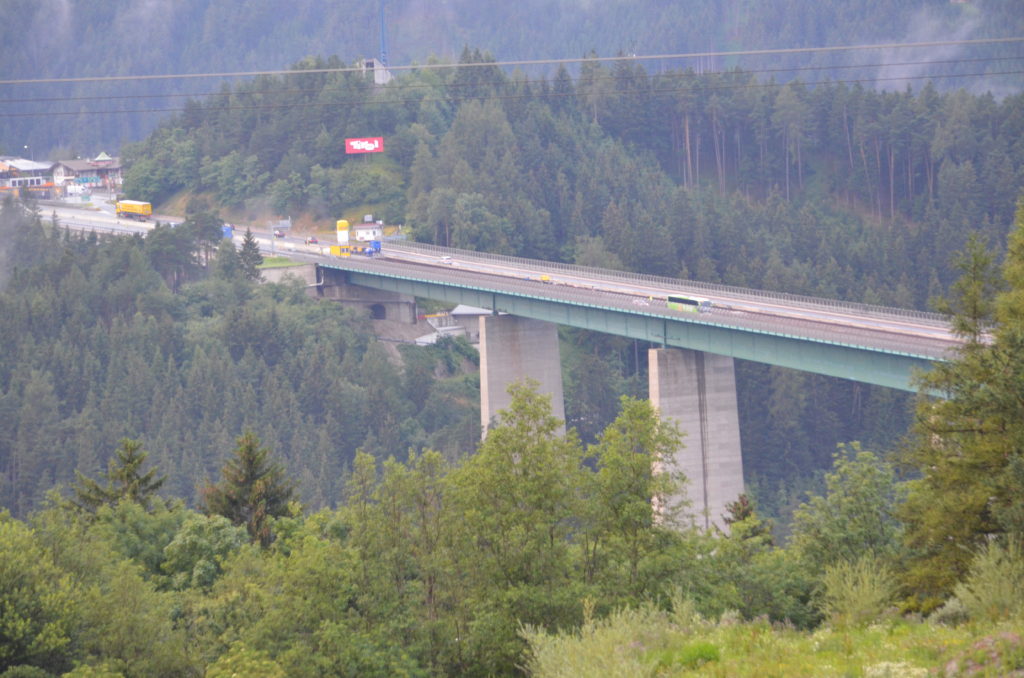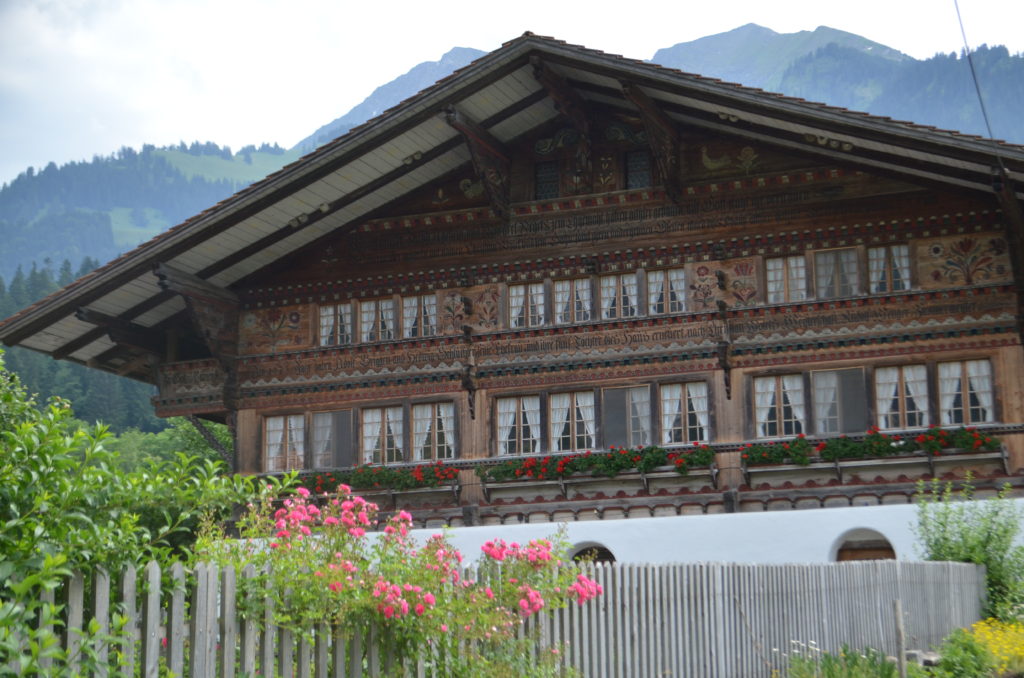Sometimes, taking the scenic route reveals the most interesting of destinations. As we traveled from Italy to Austria, we’d inadvertently requested the shortest route in distance, not in terms of time to our final destination of Salzburg. We didn’t realize that meant up and over the hills of Innsbruck, the largest city in the Tyrol province of Austria, and the countries fifth largest. We’d already rounded a curve coming down the mountain and there it was, looming in the distance. Despite the rain, we jumped out to get the best view of the Bergisel Ski Jump Tower. The futuristic tower has hosted two Olympics and many international ski jump competitions.

Summer is road construction time, and that includes multiple bridges. This is right outside Innsbruck.
We missed our window to go up in the tower and have a meal, worried that we’d miss our check in time in Salzburg, so on we went, having no idea the A4 would have saved us about an hour of driving. It was good luck, however, because while our road paralleled the major highway, we saw all sorts of global manufacturing headquarters and outlets we’d never have seen from the road.

Because the Tyrolean Alps sit high, even when descending town into the valley where Innsbrook is located, you get an idea of the massive size of the Bergisel ski jump. This photo was taken just off the road.
From pharmaceutical companies to high-end ski wear such as Bogner (oh! But it was closed!!), our favorite was the Swarovski corporate headquarters. We missed several of the attractions by minutes, but were able to see the grounds, the carousels, the expansive play areas for children, and of course, the shopping. One has to appreciate the marketing approach the Swarovski team has taken: lure them in with free or very inexpensive attractions and entertainment, making it a destination for an entire day or weekend. Kids clubs, summer camps and a hotel are also on the corporate campus (have you ever seen this type of thing at an Amazon campus? I think not).
My favorite image is of a massive crystal on the main entrance, glowing at night. It’s a literal beacon from the side road.

At the base of the Alps in Austria, off a non-descript road that parallels the A4. Who knew? Now you do!
Continuing on are dozens of bike manufacturers and other sporting retail brands we’d no idea were located within driving distance of Innsbruck and a few hours from Salzburg. If I spent much time in the area, I might have definite spending issues, so it was just as well the drive-through was short and it was past closing time for many of the facilities.
The Tyrolean Alps
Part of the fun on this stretch of the journey was going up and over the Tyrolean Alps and the associated small towns. Just on the other side of Innsbruck is Igls, overlooking the city and valley. Just five km outside the city edge, it has a handful of restaurants, a few massive homes, two grocery stores and a church, all within walking distance of several small hotels. We tried to get in for dinner but alas, it was a Friday and all the eateries were booked until closing. Next time!

It’s not always easy to capture the majesty of looming rock formations, but as a visitor, it’s hard not to take yet another snap when the rock faces, type and coloring change within a few miles of one another.
Our biggest mistake of the drive between countries was misjudging the closing of restaurants because each country is so different, we’ve had to remember or learn for the first time. Whereas Italians eat all day and late into the night, the Austrians shut down by 6 p.m. for grocery stores and eight-thirty for restaurants, unless the establishment is a bar or takes restaurants. Back in Hungary, it was late again but Germany and Switzerland were on the early side.

Right outside Igls is Patsch, and it was here we saw our one and only Polizei (police) car in Austria. A mini-mini van stuffed with six officers in uniform, who we later passed by as they ate outside a deli.
That meant we…yes! Stopped again at a McDonald’s café, where the girls have continued their love affair with ham and cheese fries, croissants and hamburgers made with organic meats. I tell myself we didn’t really come to Europe to eat at McDonald’s, but I’m not being fasicious when I claim their food here is an improvement on most restaurant food in the U.S. It’s all about the requirements for fresh and organic, two elements demanded by the Europeans.












